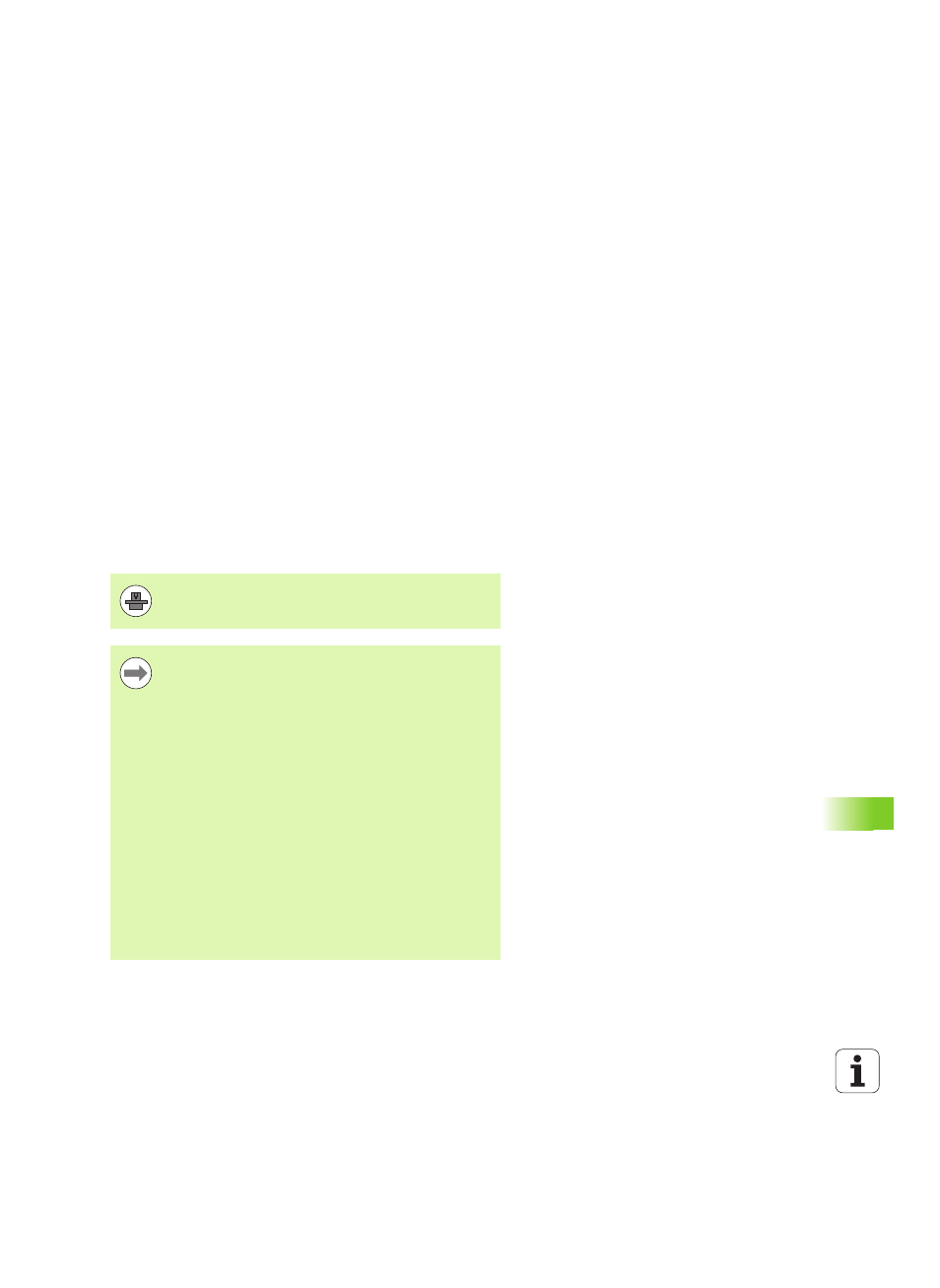2 measuring (cycle 3), Cycle run, Please note while programming – HEIDENHAIN TNC 320 (340 55x-05) Cycle programming User Manual
Page 417

HEIDENHAIN TNC 320
417
1
7.2 MEA
S
URING (Cy
c
le 3)
17.2 MEASURING (Cycle 3)
Cycle run
Touch Probe Cycle 3 measures any position on the workpiece in a
selectable direction. Unlike other measuring cycles, Cycle 3 enables
you to enter the measuring range SET UP and feed rate F directly.
Also, the touch probe retracts by a definable value after determining
the measured value MB.
1
The touch probe moves from the current position at the entered
feed rate in the defined probing direction. The probing direction
must be defined in the cycle as a polar angle.
2
After the TNC has saved the position, the touch probe stops. The
TNC saves the X, Y, Z coordinates of the probe-tip center in three
successive Q parameters. The TNC does not conduct any length
or radius compensations. You define the number of the first result
parameter in the cycle.
3
Finally, the TNC moves the touch probe back by that value against
the probing direction that you defined in the parameter MB.
Please note while programming:
The exact behavior of Touch Probe Cycle 3 is defined by
your machine tool builder or a software manufacturer who
uses it within specific touch probe cycles.
The DIST (maximum traverse to touch point) and F (probing
feed rate) data from the touch-probe table, which are
effective in other measuring cycles, do not apply in Touch
Probe Cycle 3.
Remember that the TNC always writes to four successive
Q parameters.
If the TNC was not able to determine a valid touch point,
the program is run without error message. In this case the
TNC assigns the value –1 to the 4th result parameter so
that you can deal with the error yourself. If the stylus is
already deflected at the beginning of the cycle, the TNC
assigns the value –2 to the 4th result parameter.
The TNC retracts the touch probe by no more than the
retraction distance MB and does not pass the starting point
of the measurement. This rules out any collision during
retraction.
With function FN17: SYSWRITE ID 990 NR 6 you can set
whether the cycle runs through the probe input X12 or
X13.